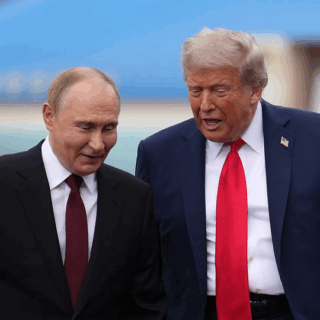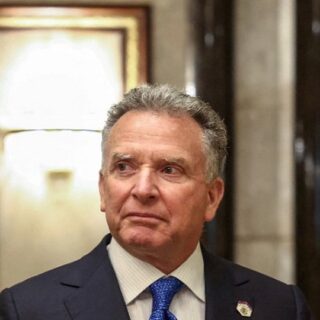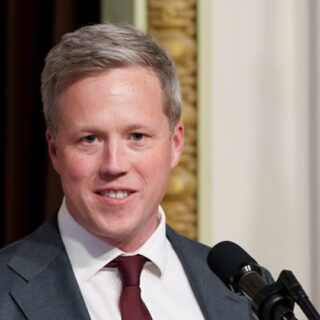
1. Introduction. Why do they move capitals?
History knows many examples when states decided to move their capital. Since the 18th century 69 countries have changed their center. It is always more than just an administrative step; it is a strategic move, reflecting new national priorities. The main reasons behind such decisions can be grouped as follows:
• Geopolitics and security. The threat of an external invasion or the need to strengthen control over distant territories is a powerful incentive. A classic example is the transfer of the Russian capital from Petrograd to Moscow in 1918 due to the threat of German occupation and the proximity to the unstable border with Finland. Similarly, Turkey moved its capital from Istanbul to Ankara in 1923 to distance itself from the vulnerable coast.
• Balanced development of territories. The hypertrophied dominance of a single metropolis, such as Moscow, often hinders the development of the regions. Moving the capital to the geographical or economic center of the country can be a catalyst for growth.
For example, Kazakhstan moved its capital from Alma-Ata to Astana in 1997 to stimulate the development of its northern and central regions.
• A symbolic break with the past and the declaration of new goals. The new capital becomes the material embodiment of a new political course. Brazil, by building Brasília in 1960 in the heart of the country, announced a turn from a colonial past concentrated on the coast to a future focused on internal development. Peter I, by founding St. Petersburg, “cut a window to Europe” and challenged the traditionalism of Muscovy.
• Reducing the administrative burden.
Overcrowding, traffic congestion, environmental problems, and high living costs in the old capital can make the government’s work inefficient. A city built from scratch allows for an optimized infrastructure from scratch, as in the case of Canberra in Australia or Astana in Kazakhstan. The world experience offers two main approaches: adaptation of an existing city (as in the case of Berlin in Germany) or the construction of a completely new city (as Brasilia in Brazil). The first way is cheaper and faster, the second is more expensive, but gives full freedom for planning and architectural solutions.
2. Options and Formats for Moving Capitals:
Global Experience
Different countries have chosen different paths to solve similar problems.
• USA: compromise and building from scratch. The capital USA wandered through various cities on the East Coast until in 1800 it found a permanent home in Washington, specially built on neutral territory between North and South as a symbol of federal unity.
• Kazakhstan: successful development of territories. The transfer of the capital from southern Alma-Ata to northern Astana (then Akmola) has been recognized as successful. It has not only strengthened the Kazakh presence in the predominantly Russian-speaking region, but also created a powerful driver of economic growth in the center of the country.
• Brazil: an ambitious but controversial project. Brasilia has certainly become an architectural symbol and has stimulated the development of the hinterland. However, its distance from the main economic and demographic centers of the country, as well as its social disparities, indicate that such projects require decades to be fully realized and come with risks.
• Russia: historical precedents and current discussions. In 1712, Peter the Great moved the capital to St. Petersburg Petersburg, orienting the country towards Europe. In 1918, the Bolsheviks, fearing an external threat and an internal counter-revolution, returned the capital to Moscow. In post-Soviet times, discussions about moving the capital to the east have been revived. In 1991, Vice President Aleksand Rutskoi and in 2021, Defense Minister Sergei Shoigu publicly proposed moving the capital to Siberia. Both these proposals were not supported by the leadership of the country, and the authors themselves within a year and a half after statements left their posts, definitely not from high political sensitivity of this issue…
3. Proposals for the relocation of the Russian capital: Vyshny Volochyok or Biysk
In addition to the ongoing discussions within the expert community, based on an analysis of global experience and Russian realities, I propose two fundamentally different models for relocating the Russian capital.
1. Vyshny — “Capital Integrator”
• Logic: Placement of the administrative center between two historical capitals — Moscow and St. Petersburg in the area of the existing now small city of Tver region Vyshny Volochyok. Cut the second word — we get the perfect name for the Russian capital: “The word “vyshny” has several meanings:
– Spatial meaning. The term is used to describe objects or places that are at a higher level. For example, “upper floor” or “upper point” in geography. — Spiritual and philosophical meaning. In religious texts and philosophical teachings, the word is often associated with higher, divine principles. Its use here symbolizes the connection of a person with the world of the spiritual and eternal.
– Historical significance. In the context of Old Russian chronicles and other historical sources, “higher” can be used to refer to power structures, higher social classes, and hierarchies. (from the dictionary).
• Tasks to be solved:
• Balancing influence: Reducing the hyper-concentration of resources in Moscow and closer integration with the north- western regions.
• Logistics:
The city is already a historical transport hub. The development of high-speed connections will create a “golden triangle” Moscow — Vyshny — St. Petersburg.
• Continuity:
Minimal stress for government and business due to proximity to existing centers.
• World analog:
Partly the experience of Germany, where the capital functions are divided between Berlin and Bonn.
2. Biysk (Altai): “The Capital-Outpost”
• Logic:
Construction of a new administrative center based on an existing small town in a strategically important region.
• Tasks to be solved:
• Geopolitical reversal: A clear signal of the priority development of Siberia and strengthening ties with Central Asia and China.
• Territorial development:
A powerful impetus for the development of the entire south of Western Siberia.
• Safety:
Distance from the western borders and natural protection by the Altai mountains.
• Agricultural security:
Placing in one of the country’s important agricultural regions solves the problem of food supply.
• Global analog:
The experience of Kazakhstan (Astana) or China’s proposed but unimplemented plans to create a second capital in Xinjiang to develop the western territories.
4. Conclusion. Why won’t the capital be moved after all?
Despite the compelling arguments in favor of moving the capital, this is unlikely to happen in the future for two fundamental reasons.
1. The transport and digital revolution. The problem of remoteness and inaccessibility of regions is gradually becoming less acute. The development of high-speed rail and air transport, the introduction of unmanned transport in cities, and the widespread distribution of high-speed internet make the physical presence of officials in one place less important. critical. The process of decentralization of functions is already possible and partially underway: individual ministries, departments and state corporations can be transferred to other cities, as happened with the Constitutional Court in St. Petersburg. This allows you to get some of the benefits of migration without huge costs and risks.
2. The natural development of a polycentric system. The future of Russia is seen not in the creation of one new center, but in the formation of a network of strong, distinctive and attractive cities. Just as in the United States it is prestigious to live not only in Washington, but also in New York, Los Angeles or Boston, so in Russia the positions of Yekaterinburg, Novosibirsk, Kazan, Vladivostok and other centers will strengthen. Each city will gain its own “identity”, flavor and economic specialization. In this configuration, the question of the physical relocation of the capital loses its relevance. The energy of the state and business will be directed not to the fantastic in complexity and cost “move”, but to the development of regions and the creation of a comfortable environment throughout the country. The experience of recent decades shows that the discussion about the relocation of the capital in Russia is more like a strategic brainstorming session, which makes it possible to identify key problems of the country’s spatial development. However, in practice , the path of gradual decentralization and strengthening of the national framework of many strong “capitals” — cultural, scientific, industrial and financial — seems to be much more realistic and effective.






One comment
Sarah Fisher
06.10.2025 at 08:36
Thank you! Certainly an interesting article that makes you think. While the idea of moving Russia’s capital from Moscow has theoretical merits, the practical challenges, historical context, and immense costs make it an unlikely scenario in the near future. The discussion, however, reflects broader debates about Russia’s regional development, centralisation of power, and national identity. Thanks for the interesting view.